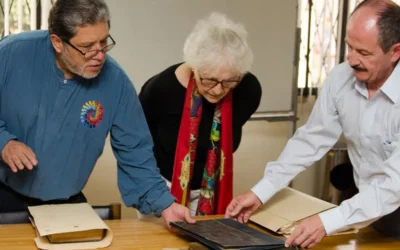What Makes a Successful Archival Project?
Success criteria specify how the project is executed. Archival projects have universal success criteria that include finishing the project on schedule, keeping costs within budget, and meeting the goals that have been agreed upon by the project stakeholders and team—but that’s not all. Additionally, deliverables and objectives are sometimes referred to as critical success factors.
They are elements that must be completed for the project to be considered finished. Most importantly, the success criteria must answer the question, “What must happen for our users and us to consider the project a success?” Also ask, “How will success be measured?” and “What factors may impact success?”
It’s vital to determine critical parameters that include targets, limits, and thresholds. For instance, what’s the delivery date? How much deadline extension can be tolerated? When do delays dictate that continuation of the effort should be evaluated? Milestone dates also help to identify poor conditions earlier in the project. Target values should also be established for costs, technological accomplishments, and areas where performance is critical to supporting the criteria associated with the original goals. This process is central to prevent wishful-thinking projects from sapping the resources of the archival organization.
What Defines Success?
Success criteria such as increased revenue and reduced costs should be measured in hard dollars or as a percentage of a specific revenue number. Improved services in archives are an essential success criterion but may be harder to define than financial benefits. It is usually a percentage of improvement in user satisfaction or a reduction in the frequency or type of user complaints.
When criteria cannot be measured in bottom-line impact, consider quantifiable statements about the impact that the project will have on the efficiency and effectiveness of your archives department. Criteria may be reduced error rates, reduced turnaround time to fulfill research requests, less cost in providing a service, or increased usage statistics.
However, archival project success is more than completing the project within the triple constraint of time, cost, and scope. Success depends on a systems approach where project parts are interrelated and managed with an understanding that failure in one area will affect other areas of the project. Success can be displayed by the agreement among the team and the stakeholders on the goals of the project, support from management to supply the resources and to remove obstacles, and ongoing project communication.
Efficiency, Utility, and Improvement
Efficiency is another level of success to consider. How well was the project managed? If the project hits its targets, but the experience adversely affected those involved, stakeholders and the team will perceive the project as unsatisfactory. In this situation, feelings matter more than results.
Another factor is utility. To what extent did the project solve a problem, exploit an opportunity, or satisfy a need? Was the issue resolved? Are users and stakeholders happy? Have the desired results been achieved?
The final aspect to consider is organizational improvement. Did the organization learn from the project? Does what was learned increase the chances that future archival projects will succeed? High-performing organizations learn from their failures and their successes—and use that knowledge to develop their success rate over time. This meta-level of success assumes a long-term perspective and measures organizational learning and a resultant increase in project accomplishment.
Paint the Picture
Your users and stakeholders may require you to be creative in outlining subjective measures of success. They may have various ideas as to what a successful project looks like and which factors are the most important. As a project manager, you must communicate throughout the project, so stakeholders feel empowered and informed. When the business alignment for the project is constant, the chance for success increases because the archival project stays aligned with the strategic direction of the organization. Paint a picture of success for stakeholders so they can understand all that you have achieved.
Margot Note
Margot Note, archivist and consultant, writes for Lucidea, provider of ArchivEra, archival collections management software for today’s challenges and tomorrow’s. Read more of Margot’s posts with advice on running successful archival projects..
Similar Posts
Lucidea’s Lens: Knowledge Management Thought Leaders Part 67 – Shawn Callahan
KM Thought Leader Shawn Callahan helps analytically-minded executives tell stories that ultimately inspire action from employees and customers.
How to Incorporate Interns in Museum CMS Projects: Data Creation
A museum expert details how interns can be successfully included in museum CMS projects at the data creation stage.
Interview with Victor Baeza about ALA’s Library Instruction Round Table
Interview with Victor Baeza, President of LIRT, about how it benefits from and supports special librarians whose roles involve teaching or training.
Navigating Selection in Archival Practice
The archival selection process is far from straightforward, given the limitations of long-term preservation and ongoing accessibility challenges.
Hosting service
Enjoy all of the benefits of your Lucidea solution with secure, reliable, stress free hosting
Programs & incentives
No matter your size or budget, we’ve got you covered, today and tomorrow




Leave a Comment
Comments are reviewed and must adhere to our comments policy.
0 Comments